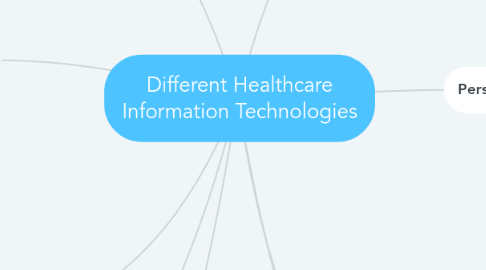
1. Electronic Prescribing
1.1. uses health information technology as a platform to allow providers and pharamicists to communicate pateint medications
1.1.1. improve prescription accuracy
1.1.2. increase patient safety
1.1.3. reduce cost
2. Privacy and Security
2.1. privacy
2.1.1. the collection, storage, and use of personal information and addresses the question of who has access to personal information and under what conditions.
2.2. security
2.2.1. prevent unauthorized access, modification, use, and dissemination of data stored or processed in a computer system, (b) to prevent any deliberate denial of service, and (c) to protect the system in its entirety from physical harm” (Turn and Ware, 1976)
2.3. confidentiality
2.3.1. Addresses the issue of how personal data that have been collected for one approved person may be held and used by the organization that collected the data, what other secondary or further uses may be made of the data, and when the permission of the individual is required for such uses
3. Patient registries and chronic disease management systems (CDMS)
3.1. Support population-level analysis and reporting to manage the health of specific populations and identify populations eligible for programs and services, including health homes
4. Health information exchange (HIE)
4.1. Facilitates electronic data-sharing among organizations and can enable care coordination, referrals, and care transitions. HIEs may also facilitate information exchange between clinical and social service providers
5. Patient Portals
5.1. Provide patients with secure, 24-hour access to their health information from any location with an internet connection
5.2. improves communication between providers and patients
5.3. allows patients to schedule, reschuedule,or cancel appointments
5.4. review benefits of their healthcare
5.5. make payments
6. Electronic Health Records
6.1. a collection of patient's health and healthcare data
6.1.1. allows providers to easily share health information with specialists
6.1.2. allows health information to be accessed even when a provider's office is closed
6.1.3. allows medical providers to maintain/keep up with health information
7. Personal Health Records
7.1. collection of an individual's medical documentation maintained by the individual themselves, or a caregiver, in cases where patients are unable to do so themselves
7.1.1. patient's medical history
7.1.2. applicable diagnoses
7.1.3. current and past medications
7.1.4. past surgical interventions
7.1.5. immunizations
7.1.6. allergies and contraindications from past medical interventions
7.1.7. blood type
7.1.8. emergency contact
7.1.9. current insurance provider
7.1.10. current and previous medical providers
